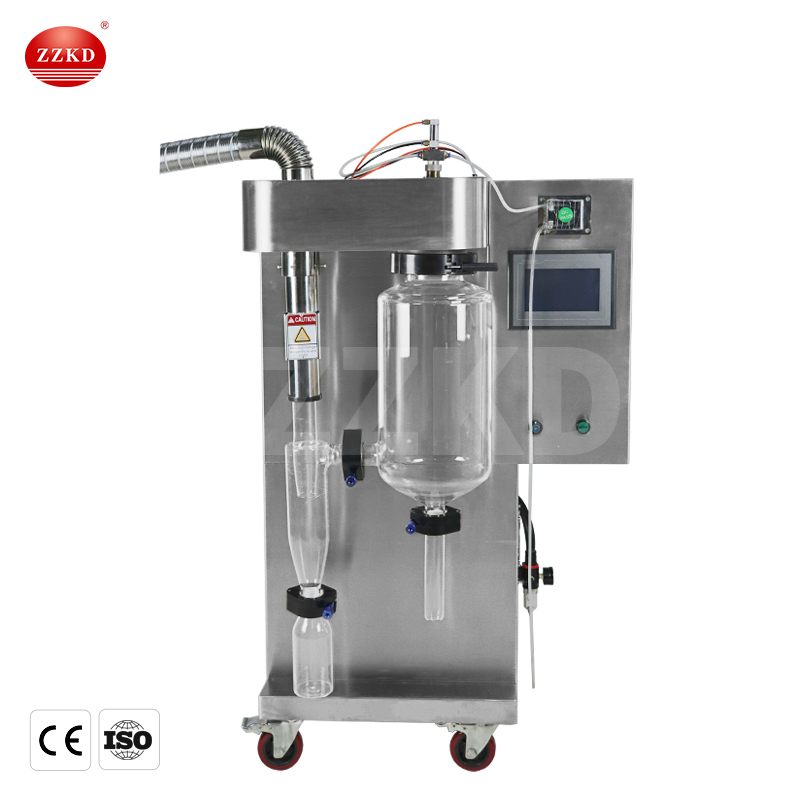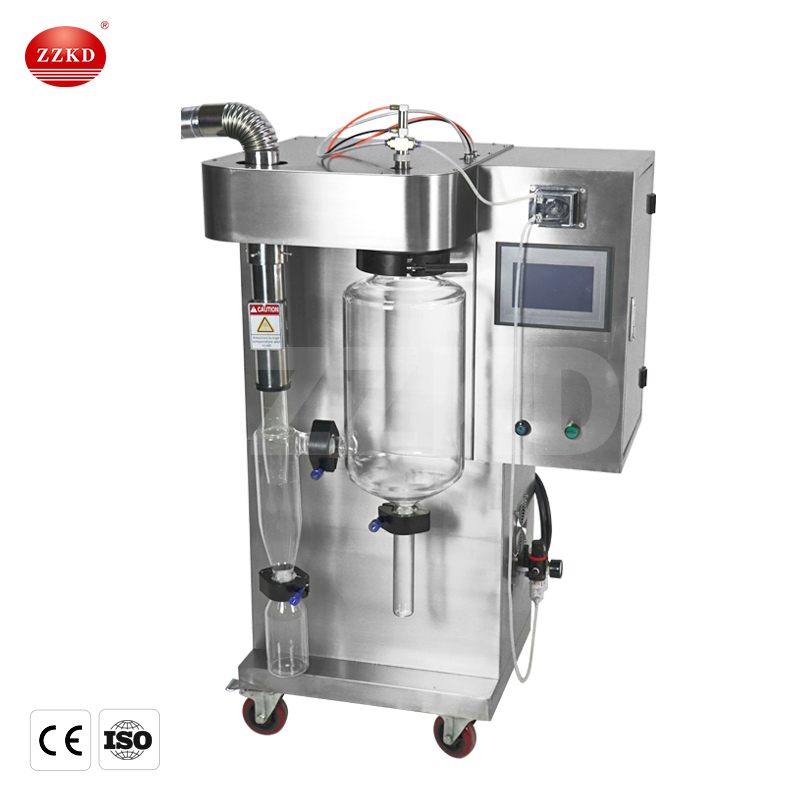Lab pilot scale spray dryer
With the development of modern technology, all walks of life have higher and higher requirements for product raw materials, especially the manufacturing needs of powder materials, and spray drying technology is currently one of the most commonly used material powder drying methods, which can reduce The thermal effect of powder products maintains biological activity. There are many types of spray dryers, but most universities and research institutes choose laboratory spray dryers. Its advantages are high efficiency, few procedures, manpower saving, relatively simple equipment structure, small footprint, convenience, and excellent product quality.
The application field of lab spray dryer is very wide, involving the application of food industry, pharmaceutical industry, ultra-fine nano powder, and also in the bioremediation of soil oil pollution. At present, the specific applications mainly include ordinary spray drying, micronization or structural modification, and microcapsules.
The working principle of pilot scale spray dryer:
The liquid containing solid components is pumped into the two-fluid nozzle by a peristaltic pump, and the solution is sprayed into tiny droplets into the drying chamber by compressed air. The small mist droplets in the hot air have a large specific surface area, and can perform heat exchange well to make the surface water vapor sublimate rapidly to form dry solid particles. The solid particles are separated from the exhaust gas through the cyclone separator and then enter the collection bottle. The exhaust gas is directly discharged to the atmosphere or air filter device. Among them, the dual-fluid nozzle has its own through needle, and adjusting the frequency of the through needle can prevent the nozzle from being blocked. The average particle size of the spray particles can be adjusted by controlling the flow of compressed air.
Spray drying video:




